Wire critter shows power of surface tension
Walking on water is a balance between water molecules and surface area
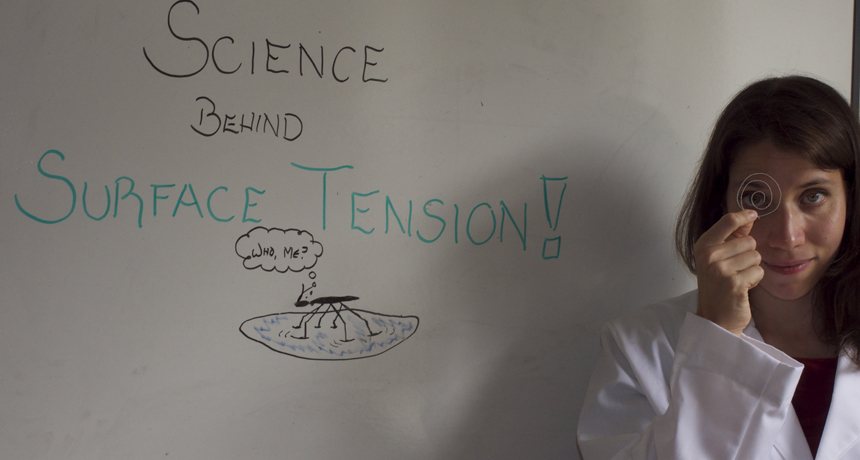
Water striders walk on water with the power of surface tension. Now, you can try it yourself. All you need is wire, scissors and water.
B. Bello/Science News
When you watch a water strider glide over the surface of a pond, you can’t help but wonder how they do it. After all, no matter how carefully you step out on the wet surface, you’ll end up getting soaked. But the tiny water strider has a weapon you do not. It‘s small body and widely spread legs harness surface tension. This allows it to skate on water. And with the right tools, you can play with surface tension, too. All you need is a bowl of water, scissors and some very thin wire.
Surface tension occurs where water or another liquid meets the air. In a liquid, molecules are attracted to each other and join together very loosely. But when a liquid meets the air, the molecules have less attraction to the air than to the liquid molecules at their sides. This stronger attraction creates a “film” at the surface of the liquid. That’s what scientists call surface tension.
Their thin, widely spaced legs spread a water strider’s weight across a large area. This allows the water molecules underneath to still stick together while supporting the insect’s weight.
You can further investigate the surface tension of water with a simple experiment from National Public Radio’s Science Friday.
1. Take very thin plastic-coated wire. It should be a little more than a quarter of a millimeter (one hundredth of an inch) across. It’s also known as 30 gauge wire.
2. Cut several pieces 30 centimeters (roughly 1 foot) long.
3. Fold each piece of wire into a flat shape. Make some spread to contact the water over a wide area, and make others into smaller shapes.
4. Fill a bowl with water and wait until the surface is perfectly still.
5. Very gently, place this wire strider on top of the water. Does it float?
6. If it doesn’t, take it out and change its shape. A spread-out form, with many points of contact that are spaced far apart, should help your water strider float. These shapes create dimples in the surface of the water. But those dimples must be spaced far enough apart that one does not interfere with another. This allows the surface tension to support the weight of your critter.
Once you’ve mastered basic wire-strider shapes, you can see which configuration best takes advantage of surface tension by asking your wire bug to now support additional weights. Once you’ve floated your wire strider, carefully place a paper clip atop it. Does your strider still float? Reconfigure your wire bug several more times to see which shapes become the most effective weight-lifters.
We tried this experiment here at Eureka! Lab. View the slideshow below to see which wire striders took home the prize.


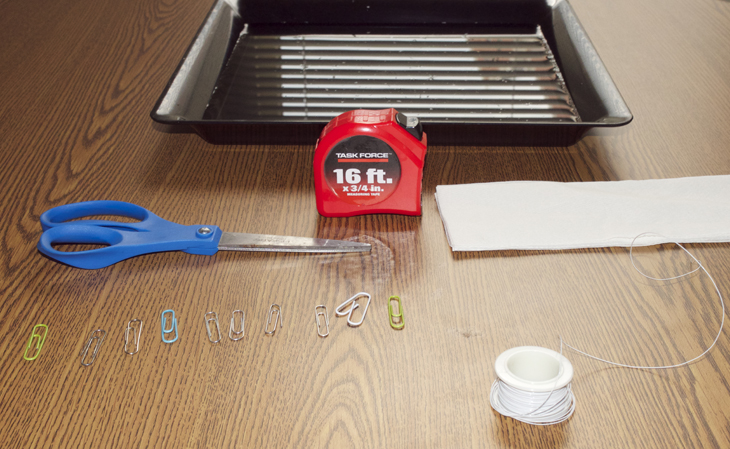
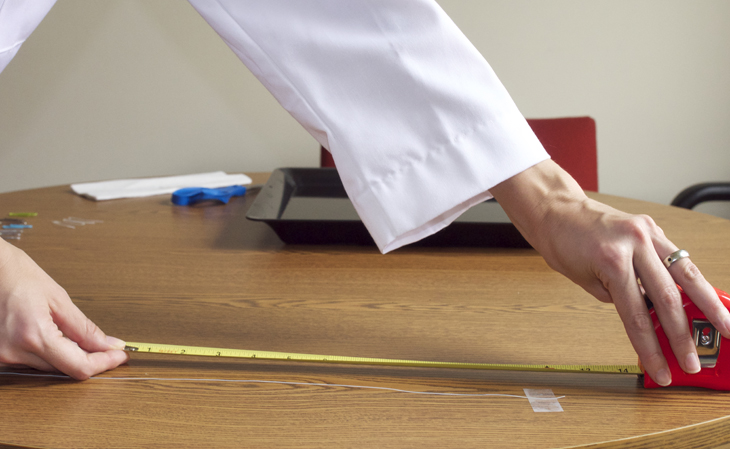
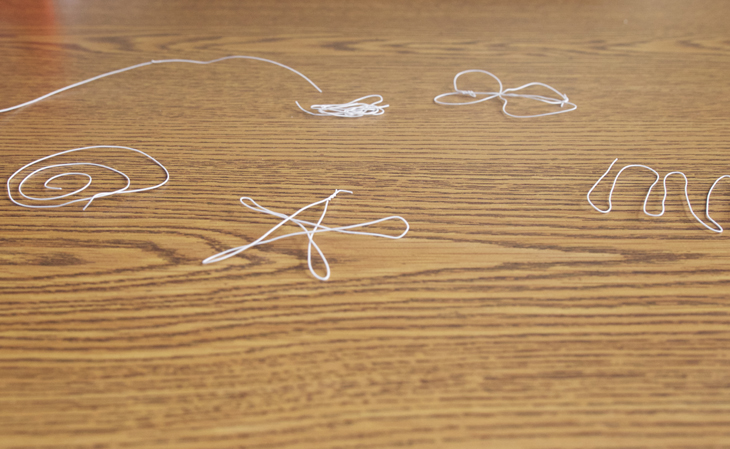
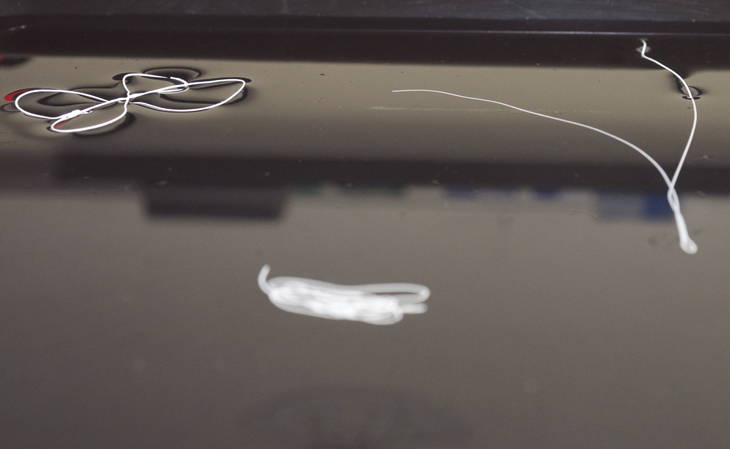
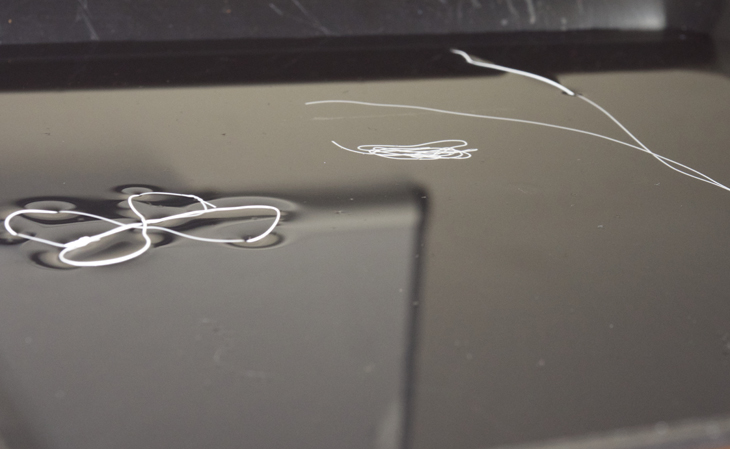
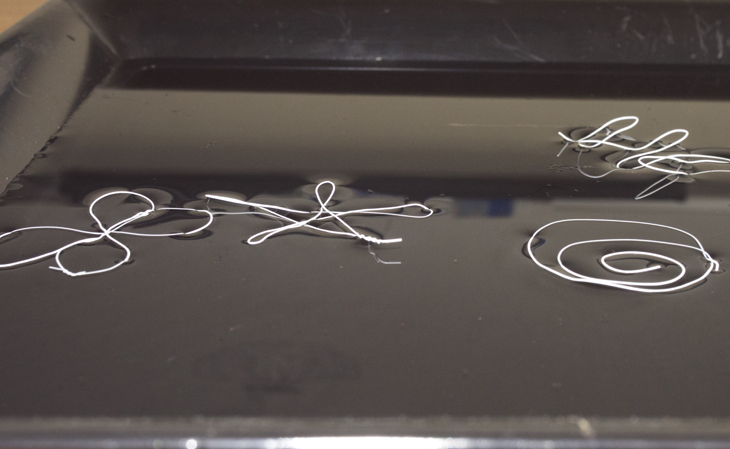
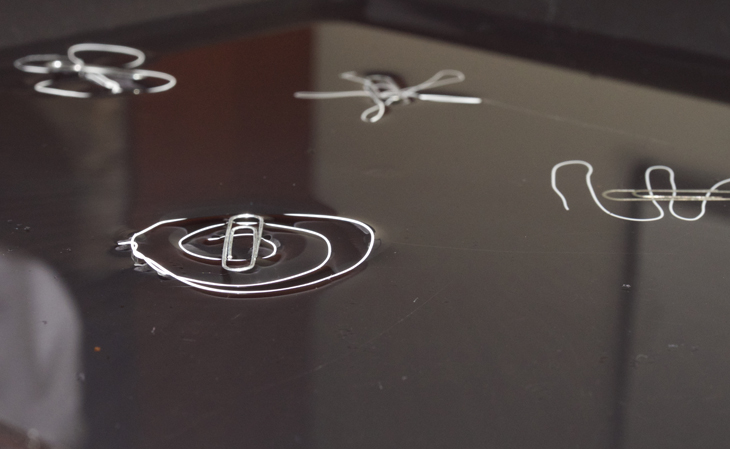
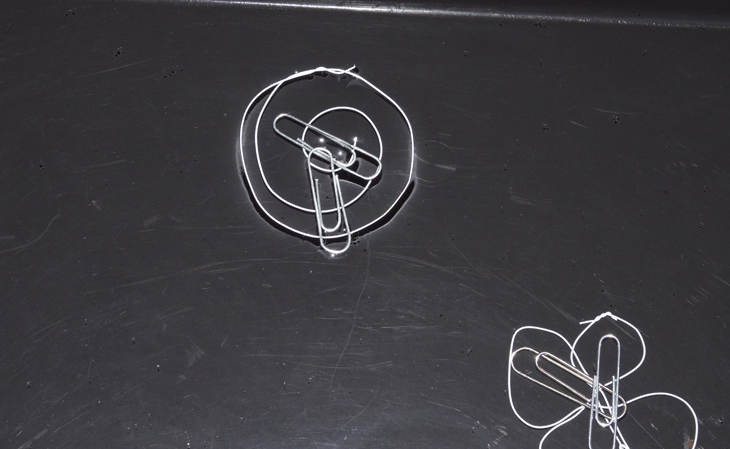
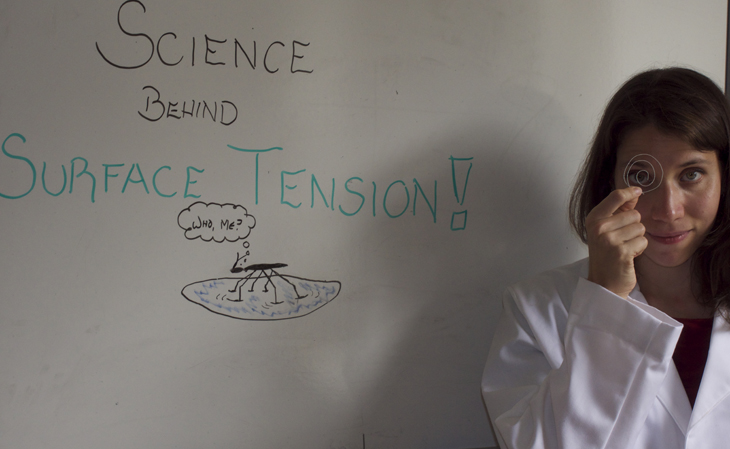
Follow Eureka! Lab on Twitter
Power Words
surface tension The surface film of a liquid caused by the strong bonds between the molecules in the surface layer.
water strider Any one of a group of insects in the family Gerridae. These insects have small bodies and long legs. They take advantage of surface tension to glide across the water’s surface.